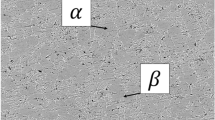Abstract
The friction in end-milling of Ti-6Al-4V has a great effect on tool life and surface quality of workpiece. This paper focuses on the effects of minimum quantity lubrication (MQL) with high pressure air and dry cutting (without coolant) in performance, in terms of friction reduction, cutting force, and cutting temperature. The equivalent friction pressure coefficient method has been proposed to analyze the friction in this study. Comparative experiments were performed to investigate friction in milling titanium alloy (Ti-6Al-4V) under different cooling/lubrication conditions (dry, MQL, and high pressure air). The main results were as follows: (1) Compared with dry cutting, the application of MQL or high pressure air lead to drastic reduction in friction at lower cutting speed in end-milling of Ti-6Al-4V. Furthermore, MQL and high pressure air had similar performance in reducing friction. (2) At higher cutting speed, the cutting performances of three coolant supply strategies were slightly different. But, the efficiency of application of MQL and high pressure air in the high-speed cutting condition was not yet obvious. Moreover, it was shown that MQL can reduce the friction at the chip-tool interface when cutting parameters and matching parameters of MQL were chosen properly. Therefore, it appears that MQL and high pressure air can be alternative environment friendliness approaches to improve machinability of difficult-to-cut materials.
Similar content being viewed by others
References
Rahman M, Wang ZG, Wong YS (2006) A review on high-speed machining of titanium alloys. JSME Int J Ser C Mech Syst Mach Elem Manuf 49(1):11–20
Astakhov VP (2010) Metal cutting theory foundations of near-dry (MQL) machining. Int J Mach Mach Mater 7(1/2):1–16
Byrne G, Dornfeld D, Denkena B (2003) Advancing cutting technology. CIRP Ann Manuf Technol 52(2):483–507
Weinert K, Inasaki I, Sutherland JW, Wakabayashi T (2004) Dry machining and minimum quantity lubrication. CIRP Ann Manuf Technol 53(2):511–537
Nandy AK, Gowrishankar MC, Paul S (2009) Some studies on high-pressure cooling in turning of Ti–6Al–4V. Int J Mach Tool Manuf 49(2):182–198
Sun J, Wong YS, Rahman M, Wang ZG, Neo KS, Tan CH, Onozuka H (2006) Effects of coolant supply methods and cutting conditions on tool life in end milling titanium alloy. Mach Sci Technol 10(3):355–370
Yamazaki T, Miki K, Sato U (2003) Cooling air cutting of Ti-6Al-4V alloy. J Jpn Inst Light Metals 53(10):16–420 (in Japanese)
Wang ZG, Rahman M, Wong YS, Neo KS, Sun J, Tan CH, Onozuka H (2009) Study on orthogonal turning of titanium alloys with different coolant supply strategies. Int J Adv Manuf Technol 42(7):621–632
Li HQ, Shin YC (2006) A comprehensive dynamic end milling simulation model. J Manuf Sci Eng 128(1):86–95
Rao BC (2002) Modeling and analysis of high speed machining of aerospace alloys. Doctoral thesis, Purdue University, 25–66
Altintas Y, Eynian M, Onozuka H (2008) Identification of dynamic cutting force coefficients and chatter stability with process damping. CIRP Ann Manuf Technol 57(1):371–374
Tawakoli T, Hadad MJ, Sadeghi MH (2010) Influence of oil mist parameters on minimum quantity lubrication-MQL grinding process. Int J Mach Tool Manu 50(6):521–531
Sharma VS, Fromentin G, Poulachon G, Brendlen R (2014) Investigation of tool geometry effect and penetration strategies on cutting forces during thread milling. Int J Adv Manuf Tech 74(5–8):963–971
Sadeghi MH, Haghighat H, Elbestawi MA (2003) A solid modeler based ball-end milling process simulation. Int J Adv Manuf Tech 22(11–12):775–785
Shaw MC (2005) Metal cutting principles. Oxford University Press, New York, pp 156–158
Li XP (1997) Development of a predictive model for stress distributions at the tool-chip interface in machining. J Mater Process Technol 63(1):169–174
Author information
Authors and Affiliations
Corresponding author
Rights and permissions
About this article
Cite this article
Liu, Z., Chen, M. & An, Q. Investigation of friction in end-milling of Ti-6Al-4V under different green cutting conditions. Int J Adv Manuf Technol 78, 1181–1192 (2015). https://doi.org/10.1007/s00170-014-6730-6
Received:
Accepted:
Published:
Issue Date:
DOI: https://doi.org/10.1007/s00170-014-6730-6




